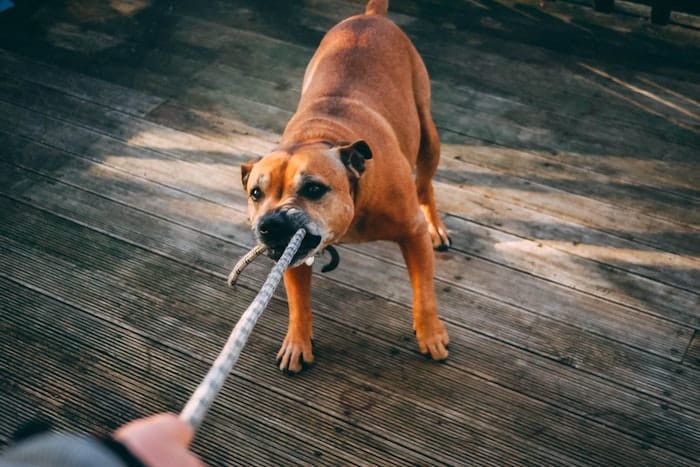Dogs have been part of human history for over 10,000 years, according to the best evidence we have today. Despite living together for this long, dogs are still animals that have their own ways of communicating. Many dog owners, even experienced ones, do not fully understand the dog’s preferences when it comes to daily life. Having your animal companion registered and joining clubs may not be enough. We often do things to our dogs that we believe they enjoy, but in reality they are simply tolerant of our behaviors or submissive to us as their owners. Anthropomorphizing dogs in this way means that dogs could be under unnecessary stress, which can eventually lead to fearful or anxious behaviors.
Learning which behaviors should be avoided and which behaviors should be encouraged is one of the most important aspects of training a dog – and the same goes for ourselves, as well. To help form a better bond between you and your pet, it’s important to be aware of what your dog likes and dislikes.

5 Things People Do That Dogs Hate
Hugging Too Much
When a person hugs another person, it is typically done as an act of affection and connection. Dogs, however, don’t typically use hugging as a sign of affection – in fact, it can be interpreted as intimidating or dominating behaviour. For example, when two dogs greet each other in the wild they will often circle around each other and sniff before deciding whether the other dog is friend or foe. This behavior does not involve any physical contact like hugging, which could potentially be seen as threatening by the other dog.
Most dogs are naturally uncomfortable with their bodies being confined or restrained. Being hugged restricts their movement and can make them feel trapped and vulnerable – which can lead to feelings of stress and anxiety. This response is especially likely if they are not comfortable with the person doing the hugging in the first place – or if they are startled by the suddenness of it. While giving your dog a hug every once in a while is okay, if you want to show your dog a lot of love, use verbal praise or give them treats instead of smothering them with hugs.
Rough Petting
Dogs may seem like they love being petted, but there is a difference between gentle petting and rough petting that can leave your dog feeling uncomfortable and even scared. Rough petting can be anything from patting them too hard to yanking on their fur or manhandling them. Dogs are highly social creatures who rely heavily on body language to communicate with humans – when a person is rough with them, this can be interpreted as aggressive behavior which causes them to feel scared and threatened.
When it comes to pets, an appropriate amount of pressure should be used in order for the dog to enjoy the experience. Many dogs prefer gentle strokes along their back and sides instead of being manhandled. When interacting with your dog, pay attention to their body language and watch for signs of stress such as licking their lips or avoiding eye contact. If a dog does not respond positively to touch or tries to move away from contact then it’s time to stop immediately and avoid any further contact until the dog is comfortable again.

Pulling on Leashes
Dogs need to be walked regularly for exercise, but they should never be dragged along while they’re tethered to a leash. Pulling on the leash can cause discomfort or even pain in some breeds. Many dogs feel threatened or scared when someone pulls sharply on their leash. When you pull back forcefully, your dog may interpret this as an act of aggression and become defensive in response. This could lead to increased anxiety and fearfulness during walks in the future, which could be hard to undo without professional help from a trainer or behaviorist.
Pulling on the leash is counterproductive in terms of training because it reinforces bad behaviors rather than good ones. If a dog is constantly being yanked around with no explanation as to why this is happening, then they won’t learn what behaviors are acceptable or not in different situations. Instead, they are more likely to associate walking with unpleasant experiences such as being dragged along instead of enjoying the activity itself. Instead of tugging on the leash, remain calm and use gentle commands to guide your dog in the right direction.
Flipping Them on Their Backs
The behavior of flipping a dog onto its back is known as an alpha roll and is often done by owners to show the dog who’s boss. This was once considered an acceptable way to train a dog but has since been found to be ineffective at best and damaging at worst. By forcing a dog into submission in this manner, you are essentially teaching them to fear you rather than respect you – not exactly what most people want from their furry companions!
Forcing a dog onto its back can also have physiological effects on the animal. When flipped onto its back, a dog’s heart rate will increase and the animal may become anxious or stressed. In some cases, it can even cause physical harm if done too forcefully or without proper technique.
Additionally, flipping a dog onto its back mimics an attack from another animal – something that may trigger instinctual fight-or-flight responses in canine brains. Even if your intentions are good, your dog may still interpret this action as threatening or aggressive due to its evolutionary past. This can cause your pet to become defensive and possibly even bite due to fear or confusion.
If you want to show your pet who’s boss, there are much better ways of doing so such as positive reinforcement training techniques which focus on rewarding desirable behaviors rather than punishing unwanted ones.
Invading Personal Space
Dogs are highly sensitive animals, and when their personal space is invaded, they may become scared or defensive. Dogs have evolved over time to be very aware of their environment and the people around them. Just like humans, dogs need their personal space sometimes and don’t appreciate it when someone invades it without permission. Dogs typically prefer to be approached slowly and calmly, with plenty of positive reinforcement along the way.
Dogs have a radius around them – their “personal bubble” – that includes the distance between themselves and another individual or object. This can range anywhere from just a few inches away up to several feet depending on the breed and personality of the dog in question. It’s important for people to recognize this space and respect it.
In general, dogs prefer if people approach them slowly and talk calmly before reaching out for physical contact. If not given this opportunity, dogs may become frightened or defensive due to feeling ambushed by someone suddenly entering their personal bubble without warning. For example, if you were to reach out your hand suddenly towards a dog that does not know you, it may cause the animal to react defensively by barking, growling, snapping at you, or even biting in some cases. Therefore, it is always best practice to let dogs come up to you first before attempting physical contact with them so that they feel more comfortable in your presence.
Final Words
While some things that dogs don’t enjoy are unavoidable – baths, trips to the vet – you can take steps to minimize the things that cause them stress. Especially behaviors that are within your control and happen every single day. By properly communicating with and behaving around your dog, you can give them a much more calm and supportive environment.
Related Reading
